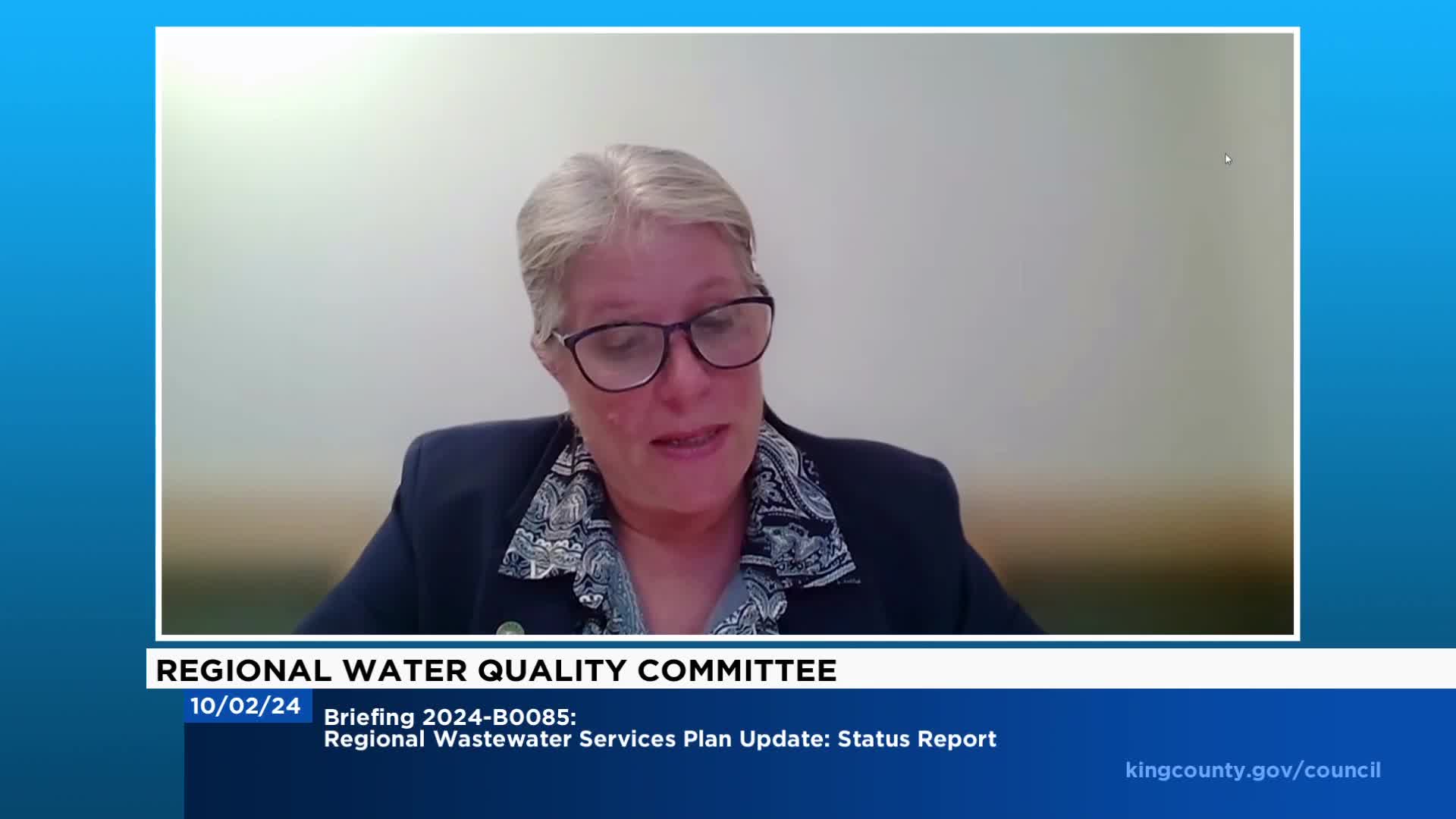King County tackles emerging contaminants with bold new strategies
October 02, 2024 | King County, Washington
This article was created by AI summarizing key points discussed. AI makes mistakes, so for full details and context, please refer to the video of the full meeting. Please report any errors so we can fix them. Report an error »

During a recent government meeting, King County officials provided an update on their ongoing efforts to address contaminants of emerging concern (CECs), particularly focusing on per- and polyfluoroalkyl substances (PFAS). This briefing followed a motion passed by the King County Council in October 2023, which directed the county's wastewater treatment division (WTD) to take specific actions regarding these contaminants.
Erica Aquino, policy and research supervisor at WTD, outlined the connection between the regional wastewater services plan update and the management of PFAS and other CECs. She emphasized the importance of source control—addressing contaminants at their origin—rather than solely managing them at wastewater treatment facilities. Aquino highlighted that CECs often enter wastewater systems from various sources, including industrial discharges and residential runoff.
The council's motion outlined nine specific actions for WTD, which include identifying significant sources of PFAS, supporting state and federal action plans, and researching treatment technologies. WTD is currently conducting monthly sampling of PFAS at its treatment plants and is collaborating with the King County Solid Waste Division to monitor PFAS levels in landfill leachate.
Megan Smith, leading the Clean Water Healthy Habitat Initiative, elaborated on the county's cross-departmental approach to tackling CECs. She noted that various county agencies, including public health and stormwater management, are involved in efforts to mitigate the impact of these contaminants. Smith also mentioned the county's updated sustainable purchasing policy, aimed at reducing the procurement of products containing harmful chemicals.
The meeting underscored the collaborative nature of the county's strategy, with officials expressing the need for public education and engagement to effectively address the pervasive issue of PFAS and other CECs. As the county continues to develop its response, officials are also preparing for potential future challenges, including the emerging concern of microplastics.
Erica Aquino, policy and research supervisor at WTD, outlined the connection between the regional wastewater services plan update and the management of PFAS and other CECs. She emphasized the importance of source control—addressing contaminants at their origin—rather than solely managing them at wastewater treatment facilities. Aquino highlighted that CECs often enter wastewater systems from various sources, including industrial discharges and residential runoff.
The council's motion outlined nine specific actions for WTD, which include identifying significant sources of PFAS, supporting state and federal action plans, and researching treatment technologies. WTD is currently conducting monthly sampling of PFAS at its treatment plants and is collaborating with the King County Solid Waste Division to monitor PFAS levels in landfill leachate.
Megan Smith, leading the Clean Water Healthy Habitat Initiative, elaborated on the county's cross-departmental approach to tackling CECs. She noted that various county agencies, including public health and stormwater management, are involved in efforts to mitigate the impact of these contaminants. Smith also mentioned the county's updated sustainable purchasing policy, aimed at reducing the procurement of products containing harmful chemicals.
The meeting underscored the collaborative nature of the county's strategy, with officials expressing the need for public education and engagement to effectively address the pervasive issue of PFAS and other CECs. As the county continues to develop its response, officials are also preparing for potential future challenges, including the emerging concern of microplastics.
View full meeting
This article is based on a recent meeting—watch the full video and explore the complete transcript for deeper insights into the discussion.
View full meeting
